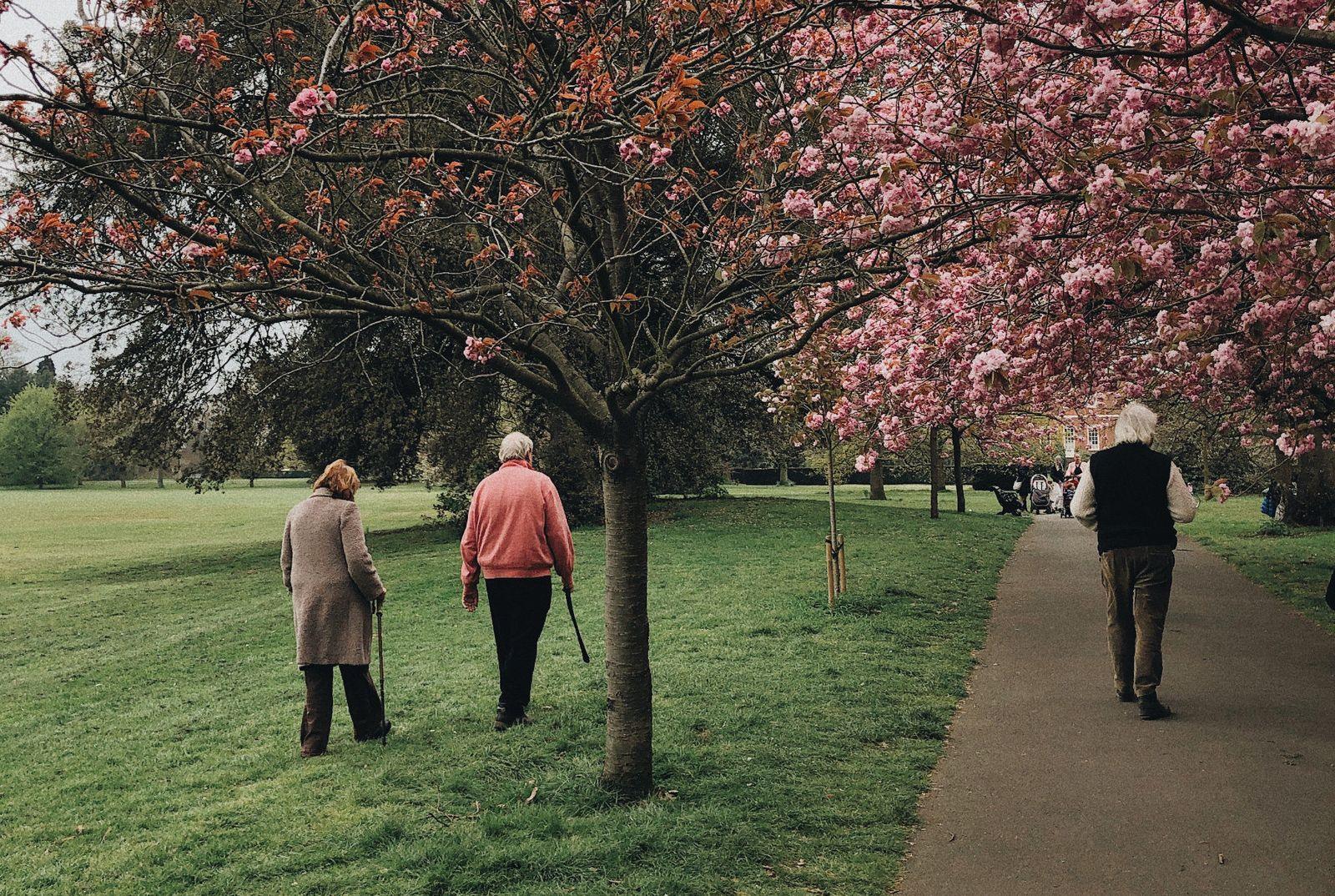According to the world health organization, the world’s population aged 60 and older will double by 2050. This trend puts great importance on the pursuits of healthy aging, and how we’re going to increase the healthspan of our older populations. Aging effects the body in many ways, and understanding these changes is key to finding strategies to that help manage these effects and optimize our health. Here is a comprehensive, and ever evolving, list of the effects of aging.
Skin
The dermis (skin) is the largest organ in our body, comprising nearly 15% of our body weight. It’s the most visible part of our bodies, the most exposed to our external environment and it’s showcases the most noticeable effects of aging. These effects predominantly manifest as dryness, discolouration, wrinkles, and overall skin health.
Skin Dryness
Discolourations and Malformations
- Age spots / Liver Spots
- Increase in skin tags
- Enzymatically active melanocytes decrease at a rate of 10% to 20% per decade (uneven pigmentation in elderly skin)
- Increased bruising
Wrinkles
- Epidermal thickness decreases by approximately 6.4% per decade
- Loss of elastic tissue (elastin)
- Decrease in Collagen production
- After the age of 20, a person produces about 1 percent less collagen in the skin each year.
- Collagen production decreases on average by 68% by age 80
- Altered collagen with a higher degree of disorganization
- Decrease in Hyaluronic acid
- The skin’s hyaluronic acid (HA) content starts to decrease in as early as twenty years of age and is reduced to half by the age of fifty.
- Loss of subcutaneous fat
- Increase in enlarged pores
Skin Health
- Decrease in skin barrier function
- Flattened dermal-epidermal junction, more fragile and less resistant to shear forces.
- Decrease in Langerhan cells
- Slower epidermal cell turnover
- Complete renewal of the epidermis requires 40 to 60 days in the elderly compared with 28 days in young adults.
- Prolonged skin wound healing
- Decrease in Keratinocyte proliferation and fibroblast proliferation
- Increase in senescent skin cells
- Increase in cutaneous malignancy (skin cancers)
- Pacinian and Meissner’s corpuscles degenerate
Hair and Nails
Hair is abundant, with nearly 5 million hairs distributed across an adult body. The qualities and appearance of hair changes significantly with age, making it one of the most noticeable areas of aging. Nails grow similarly, and experience their own unique effects of aging.
- Thinning hair strands
- Decrease in number of melanocytes (greying hair)
- Decrease in the number of follicles within the follicular unit
- Hair density is diminished
- Increase in androgenic alopecia (Male pattern baldness)
- Increase in Female Pattern Hair Loss
- Increased ratio of telogen to anagen follicles
- Increased ratio of vellus to terminal hair
- The rate of hair and nail regeneration slows
- Nails become more brittle
- Nails become yellow and opaque
- Increase in nail thickness and ingrown nails
Cardiovascular
Our cardiovascular system is crucial in supplying our body with blood and oxygen. This system effects our entire body, and has pronounced effects on our muscles and organs. The effects of aging are significant and lead to some of the biggest health challenges we face.
- Stiffening of blood vessels and arteries
- Increase in blood clots
- Higher prevalence of varicose and spider veins
- Increase in Arotic Aneurysms
- Lower heart rate
- Increase in hypertension
- Less flexibility, stiffness, and thickening of the aorta
- Slower production of blood cells
- Higher likelihood of developing Atrial fibrillation
- Increase in the size of the heart
- The thickening of the basement membrane of the capillary walls
- Number of myocardial cells declines
- Decrease in the number of pacemaker cells in the sinoatrial node
- Reduced nitric oxide production
- Collagen deposits increase in myocardium
- Reduced baroreceptor response
- Higher prevalence in diastolic dysfunction
Musculoskeletal
The muscles, bones, ligaments and tendons are responsible for the structure and functional operations of the body. Our activity levels and overall mobility are greatly affected by aging in this system.
- Loss of muscle mass
- Loss of muscle cell numbers
- Loss of muscle twitch time and force
- Increase in fat around muscle cells
- More connective tissue in muscles
- Reduced muscle metabolism and oxygen utilization
- Reduced muscle protein synthesis
- Decrease in muscle motor units
- Endurance capacity declines
- Loss of bone density
- Cartilage inside a joint becomes thinner
- Joint tissues become more rigid and brittle
- Prevalence of spine compression
- Higher prevalence of ACL disruption
- Decrease in osteoblast growth factors
- Increase in meniscal damage
Brain
The brain is made up of billions of neurons and other cells that are connected to each other. As we age multiple changes happen in the structures and cells of the brain which can lead to cognitive decline such as memory loss or dementia.
- Parts of the brain begin to shrink
- Loss of synaptic plasticity
- Decline in Episodic Memory
- Blood flow decreases by 27% by 70
- Blood-brain barrier becomes less effective
- Increase of white matter lesions
- Decrease in neurotransmitters
- Lower vessel count in cerebral artery circulation
- The size and number of neurons shrinks
- Deterioration of Neurological Stem Cell proliferation and differentiation
Vision and Hearing
Our main inputs to the world reside in our ears and eyes. With age their ability to process sound and images diminishes and changes the way we interact with the world around us.
- Increased incidence of Enophthalmos
- Lens becoming increasingly dense and inflexible
- Delayed regeneration of the photopigment rhodopsin (light changes)
- Loosening of the eyelid muscles
- lacrimal glands produce fewer tears
- Increased incidence of age-related macular degeneration
- Posterior vitreous detachment
- Increase in cataracts
- Overall hearing decline (Presbycusis)
- Increased incidence of tinnitus
- Vestibular apparatus progressively loses hair cells causing balance issues
Reproduction and Hormones
The reproductive and hormonal systems are responsible for our ability to procreate and change dramatically with age. These hormonal changes represent some of the biggest milestones in human aging.
- Decrease in Growth hormone
- Decrease in Melatonin
- Increase in Follicle-stimulating hormone
- Increase in Luteinizing hormone
- Increase in Parathyroid hormone
Women
- Menopause
- Decrease in fertility
- Ovarian cells (oocytes) become more disorganized
- Difficulty conceiving
- Decrease in Estrogen production
Men
- Decrease in Testosterone
- Lower testicular volume and metabolism
- Prostate enlargement
- Semen volume and quality decreases
- Erectile disfunction
Immune System
The immune system is an important system to regulate healing in our body. With age these systems experience loss of function and lead to increased incidence of injury and disease.
- Slower macrophage
- Decline in T-cell function
- Fewer white blood cells
- Less effective antigens
- Increased risk of Cancer
- Slower wound healing
- Increase in autoimmunity
- Sweat gland function deteriorates
- Delayed angeonesis
- Vitamin D deficiency
- Increased susceptibility and severity of viral infection
Cellular Health
Inside all parts of the body are cells, and the ability of these cells are crucial to all functions of the body. Many of the broad effects of aging can be traced back to the cellular level.
- Regenerative power of stem cells decline
- Deterioration of Stem Cell proliferation and differentiation
- MSCs reduced ability to handle oxidative stress
- Decrease in stem cell population
- Decrease in cellular metabolism
- telomeres shorten
- Mitocondrial disfunction
- Cell division slows down
- Accumulation of senescent cells
- Deficiency in the DNA repair function
- Accumulation of DNA damage
- Increases in DNA mutations
- Human MSCs decline with age
- Decline in glycosaminoglycans
- EPC’s lose ability to express growth factors
- Older Mesenchymal stem cells have reduced capacity to expand
Organs
Healthy functioning organs are crucial for overall health. Organs use blood, cells and muscle tissues like many parts of the body but manifest the effects of aging in their own unique ways.
Urinary tract
- Bladder loses elasticity
- Reduced bladder capacity
- Pelvic floor muscles weaken
- Number of Kidney Nephrons decreases
- Arteries supplying the kidney narrow
Liver
- Blood flow to liver decreases
- Volume of liver cells decreases
- Number and activity of Kupffer cells increases
- Overall liver function decreases
Pancreas
Respiratory
There are many diet and lifestyle factors that can help slow down these effects of aging, but unfortunately our bodies still get older every day. But there are some strategies to intercept the aging process and preserve younger cells to use in regenerative medicine to help our bodies recover and fight these effects of aging. Learn more about Acorn’s cell cryopreservation, and save your cells from the effects of aging.

